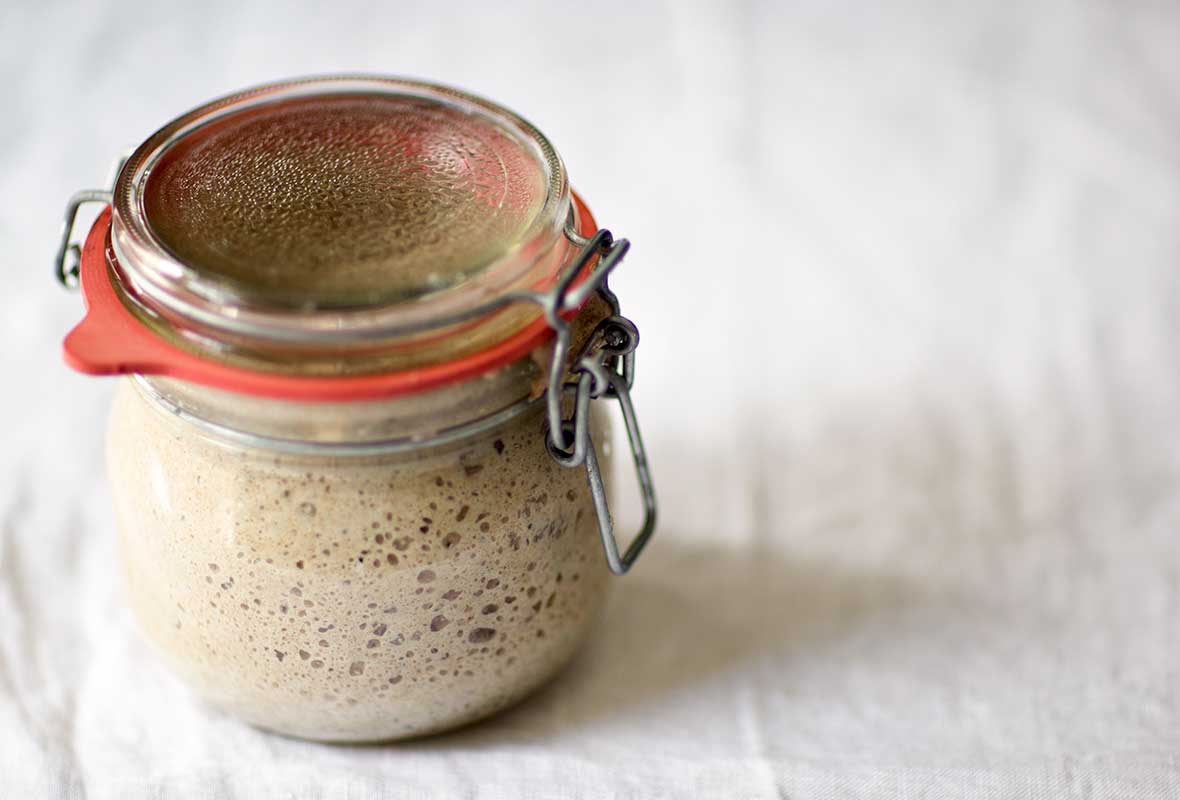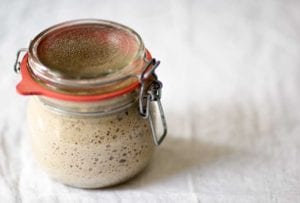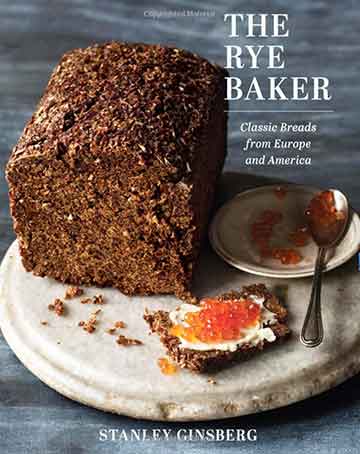
It’s not hard to make a rye sourdough starter from scratch. Some sourdough starters rely on wild yeasts that live in the air, others on acid-producing bacteria present in buttermilk, yogurt, pineapple juice, and the like, and still others start with commercial yeast or store-bought starters. Fact is, none of these additives is necessary. All it really takes to build a delicious and robust rye sour culture, or starter, is some whole-grain rye flour, water, a warm place, and patience. [Editor’s Note: And when your traditional rye sourdough starter is complete, the very first thing you’re going to want to do is use it to make this Galician rye bread.]–Stanley Ginsberg
☞ LEARN MORE, READ: HOW TO DRY SOURDOUGH STARTER

Rye Sourdough Starter
Ingredients
Day 1: Make the Rye Sourdough Starter
- 2.5 ounces whole grain rye flour, preferably organic
- 2.5 ounces warm water (105°F or 41°C)
Days 2 to 7: Refresh the Rye Sourdough Starter
- 2.5 ounces whole grain rye flour, preferably organic
- 2.5 ounces warm water (105°F or 41°C)
- 2.5 ounces Sour Starter from the preceding day
Days 8 and Beyond: Maintain the Rye Sourdough Starter
- 2.5 ounces medium or whole-grain rye flour, preferably organic
- 2.5 ounces warm water (105°F or 41°C)
- .25 ounces rye sourdough starter
Instructions
Day 1: Make the rye sourdough starter
- Start with equal amounts of organic rye flour and water by weight. Dump them in a nonreactive (glass, porcelain, stainless-steel, plastic) container, mix by hand into a stiff paste, cover, and let stand at room temperature (68 to 72°F or 20 to 22°C) for 24 hours.
☞ TESTER TIP: Occasionally the yeast normally present in whole grains fail to establish itself in a new culture; if, after 3 or 4 days, the culture darkens, develops a mold, or smells bad, dump the whole batch and start over. After a week, the culture, or sourdough starter, will be ready to use or to be stored refrigerated in an airtight container for a couple days. [Editor's Note: If storing the sourdough starter for more than a couple days, you'll need to maintain it, which we explain how to do just below.]
Days 2 to 7: Refresh the rye sourdough starter
- The next day, discard all but 2 1/2 ounces (70 grams) of the culture and mix the remainder with the refresh ingredients, cover, and let stand. Repeat each day, discarding all but 2 1/2 ounces (70 grams) of the preceding day’s culture.
☞ TESTER TIP: The most important point to remember at the early stages is to feed the sourdough starter daily. Even when it shows no apparent fermentation, the yeast is busy multiplying and consuming nutrients at a very high rate. By the second or third day, it will swell, show bubbles, and give off a clean sour smell. Over the next few days the activity will become more and more vigorous and the smell more intense.
Days 8 and Beyond: Maintain the rye sourdough starter
- In a perfect world—or in a working bakery—sourdough starters are refreshed daily. That said, daily feedings demand both a degree of dedication and abundant flour supplies that are impractical for all but the most committed home bakers. You can get by refreshing your starter every 36 hours or so.
- Mix the rye flour, water, and rye sourdough starter by hand until incorporated. Cover and ferment at room temperature (68 to 72°F or 20 to 22°C) overnight or for 10 to 12 hours. The sponge will be very bubbly, have a clean sour smell, and will have tripled in volume. Store refrigerated in an airtight container and it will last indefinitely.

Nutrition
Nutrition information is automatically calculated, so should only be used as an approximation.
Recipe Testers’ Reviews
The rye starter was easy to make and quick. It took about 5 minutes each of the 7 days. Mine smelled great and seemed consistent after the week of feedings. I switched to the refresh amounts after that and it stayed nice and healthy.
During the buildup, you end up tossing about 2/3 of it away. I definitely recommend a scale versus just using volume measurements.










My starter smells ok but fails the floating test, trying now day 9. Also it doesn’t even double in volume leave alone triple.
What do I do wrong?
Hello, Martin. Starters are finicky things. I’ve seen some go like gangbusters while others just sit there. First, are you using a scale? Do you live in an area that has hard water? That can sometimes affect the development of the starter. Last, one of our readers, Emilian Geczi, said she had the same problem. Her solution: “Sift out about 15-20% of the flour (it will be mostly the bran that gets sifted out). My starter really took off once I fed it 80% sifted flour.”
Write back, and let’s see if we can solve this for you.
Hi David, thanks for trying to help. I am in Johannesburg/South Africa, which is known for rather soft water. I do use a scale and am religious in terms of accuracy (being a German…) and also I do sift my rye flour. I just tried the float test again, the starter doesn’t hurtle to the bottom like a stone anymore, but it still sinks rapidly.
Martin, well, that’s some improvement! My suggestion is to keep plugging away at it. It sounds like there’s some improvement. Now, one thing you can do is to add a very, very small pinch of packaged yeast. That should push you over the hump.
My Rye flour starter always sinks don’t bother checking anymore as long as it’s active it works. However, the only times it used to float was when I made a Levain overnight to mix the next morning. The only problem I still have is it’s a little damp on the bottom all the time but I get great rise and colour with just adding hard working rye starter to the flour. BTW it took 3 attempts to get the starter to work, I now keep it in the fridge all the time and feed small amounts three times a week and use it straight from the fridge after a night of feeding. I think the heat and humidity in Australia plays up a bit with the starter.
Thanks so much for sharing your experience, Joe.
In case anyone else is using freshly ground rye flour, and is having some trouble getting the starter to double, this tip may help: sift out about 15-20% of the flour (it will be mostly the bran that gets sifted out). My starter really took off once I fed it 80% sifted flour.
Thanks for that tip, Emilian!
On day 3 it has no visible bubbles. Dose this mean ita dead?
Shayne, it could take up to a week to get going, depending on the conditions.